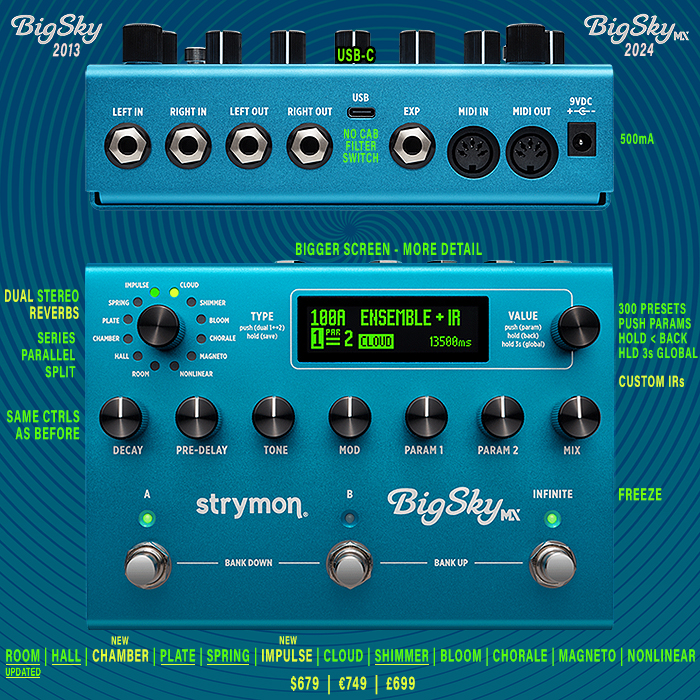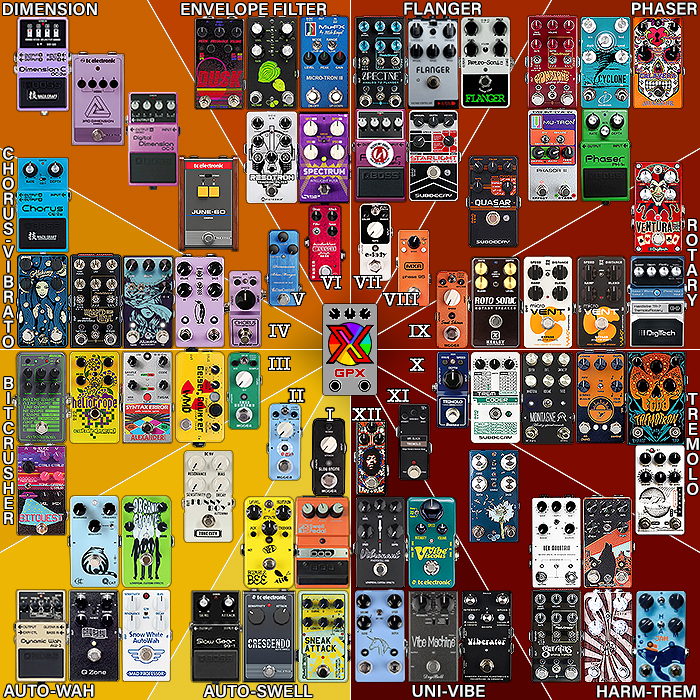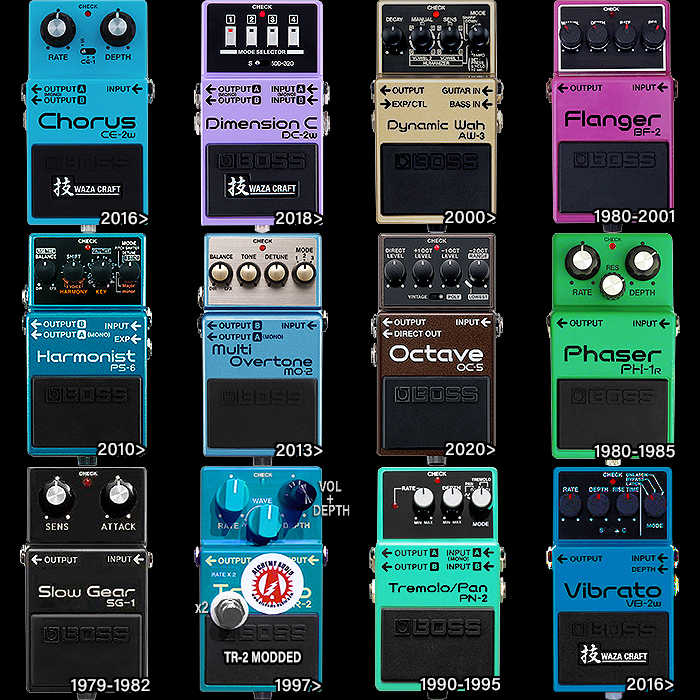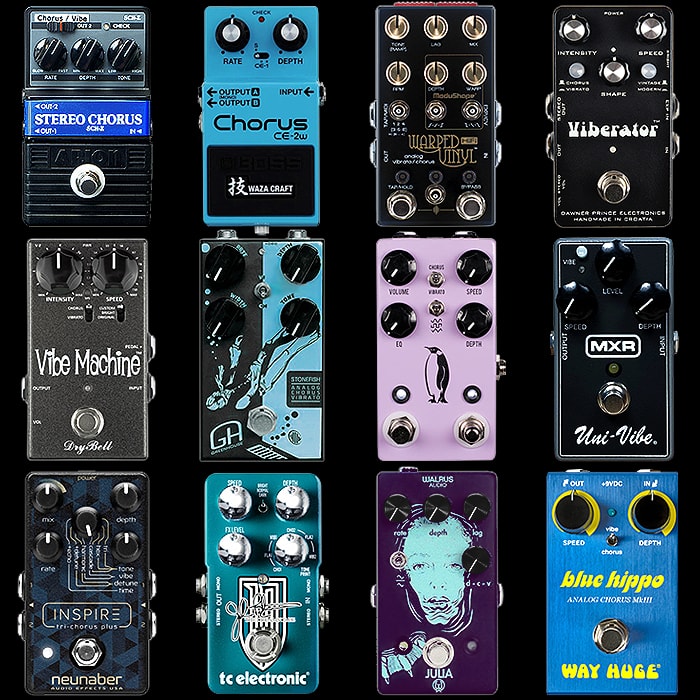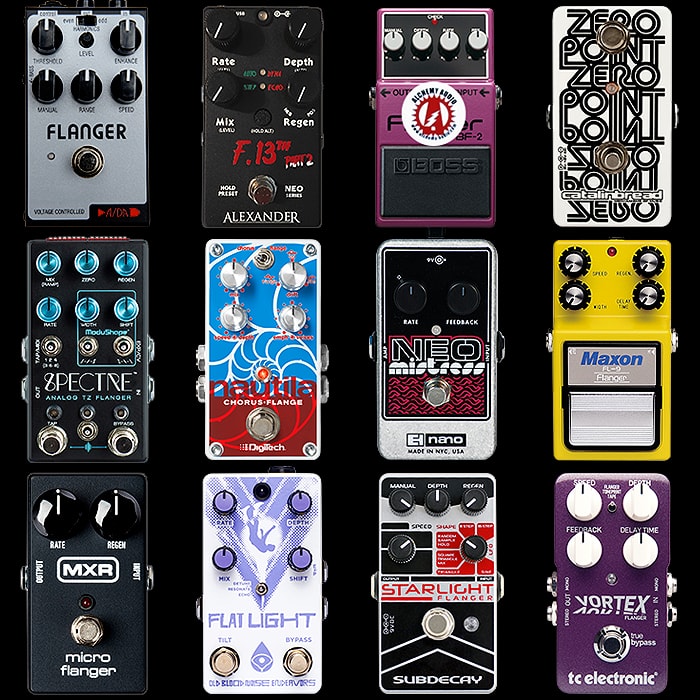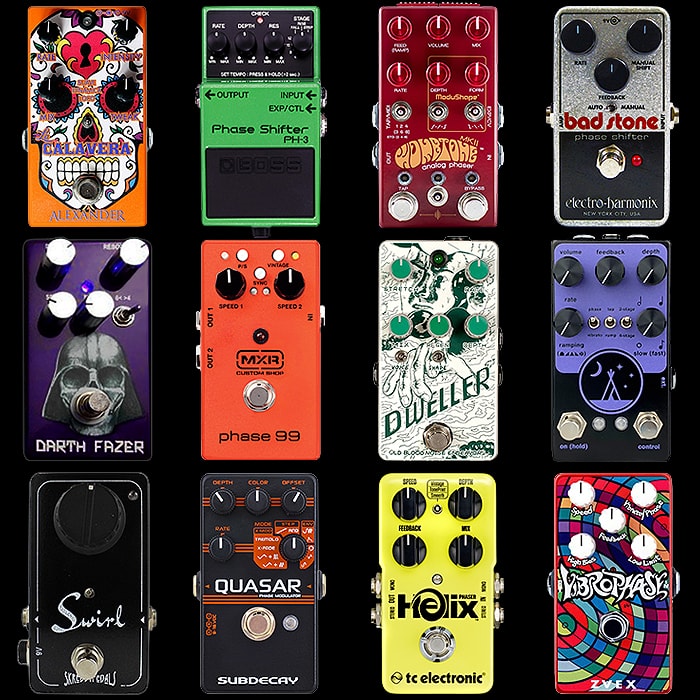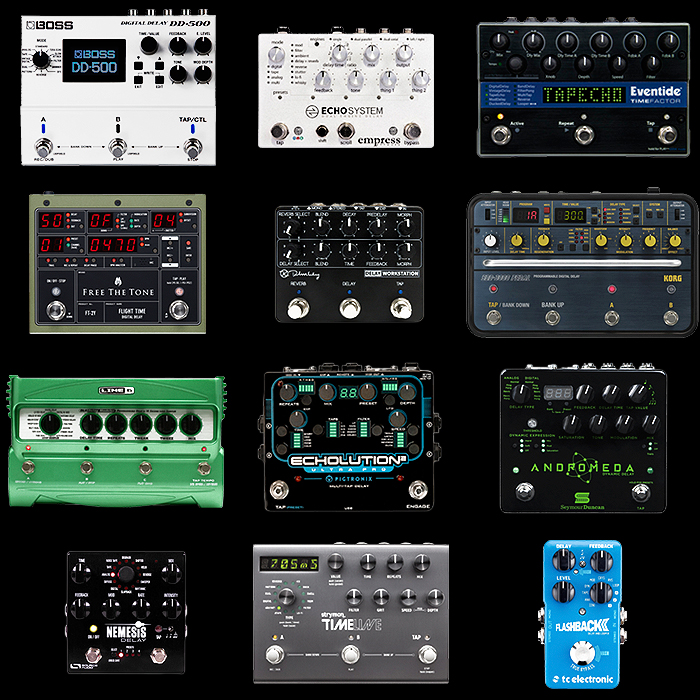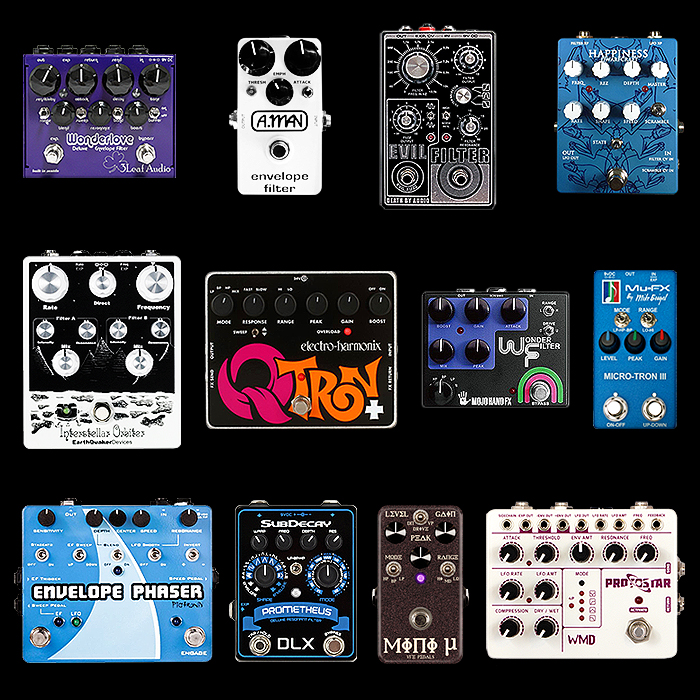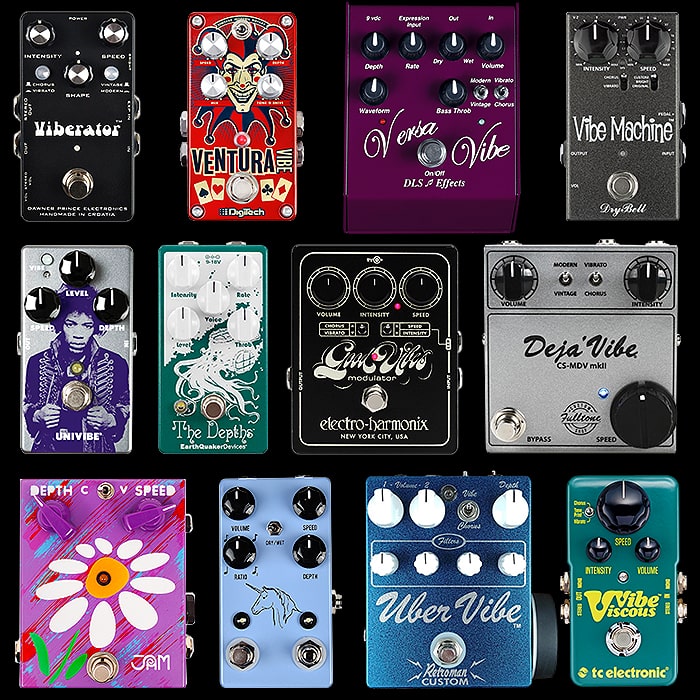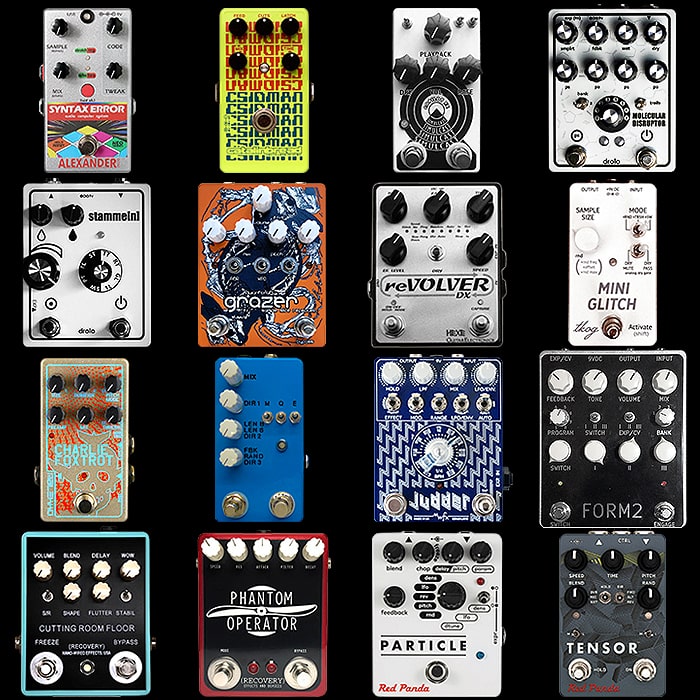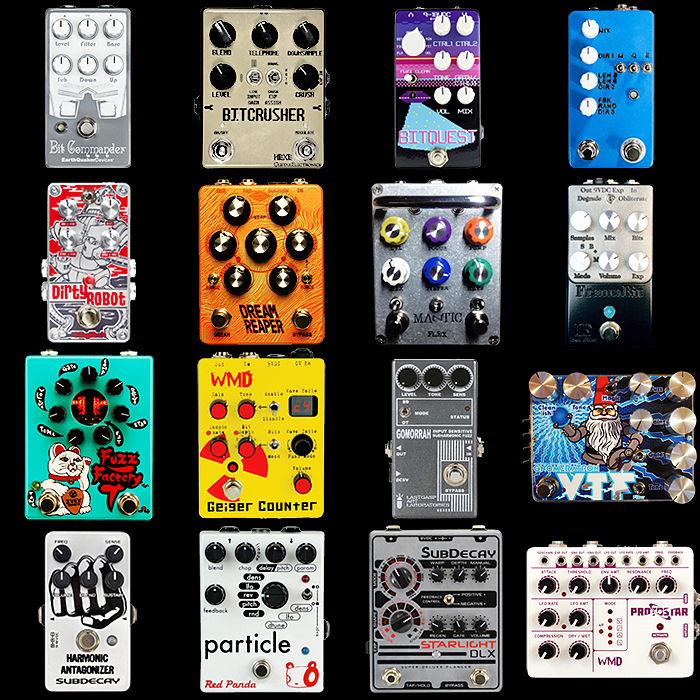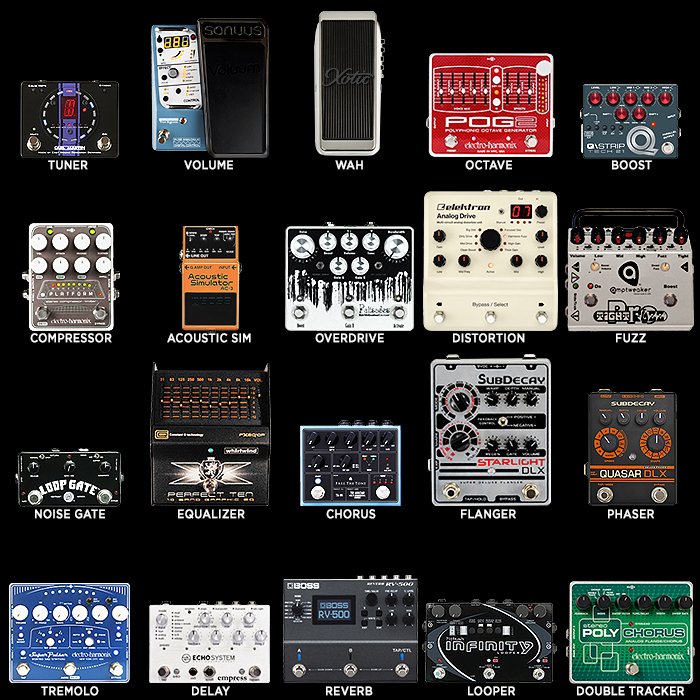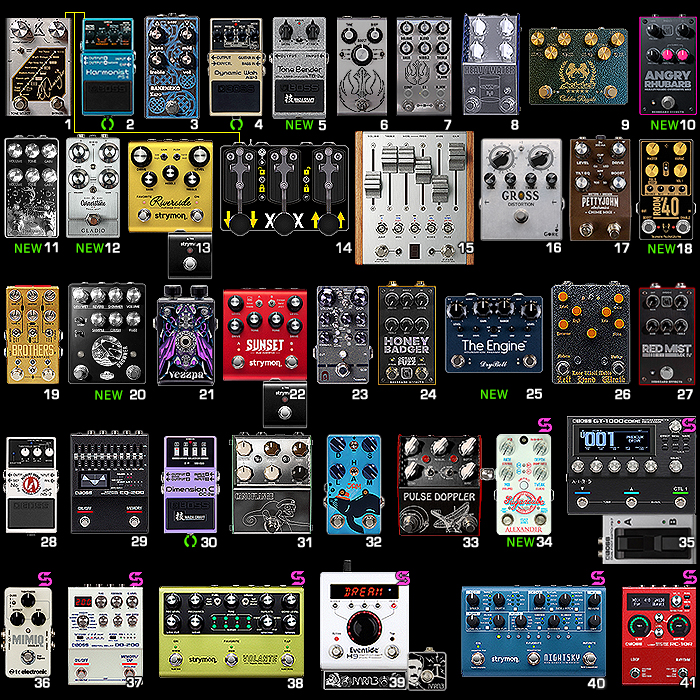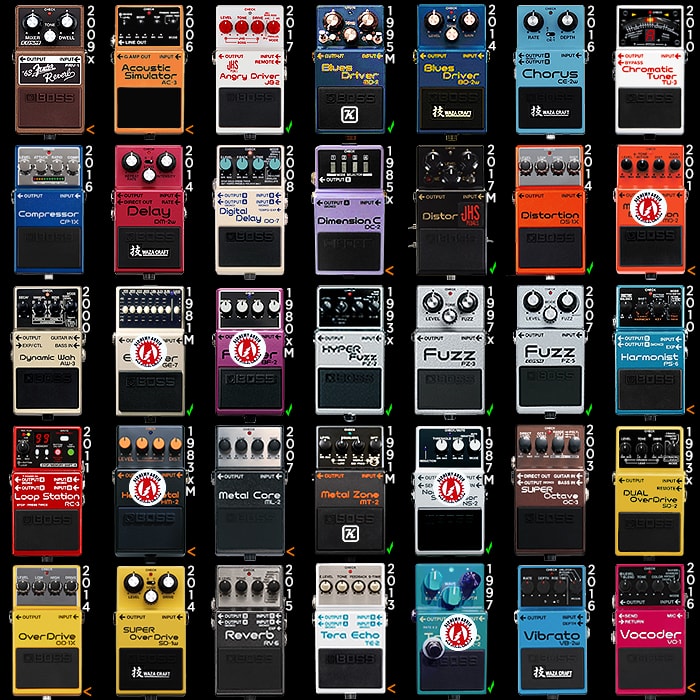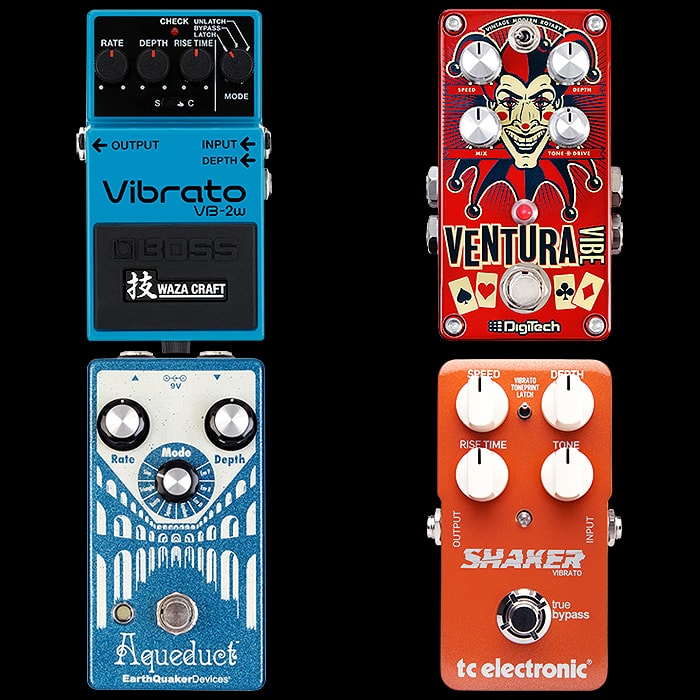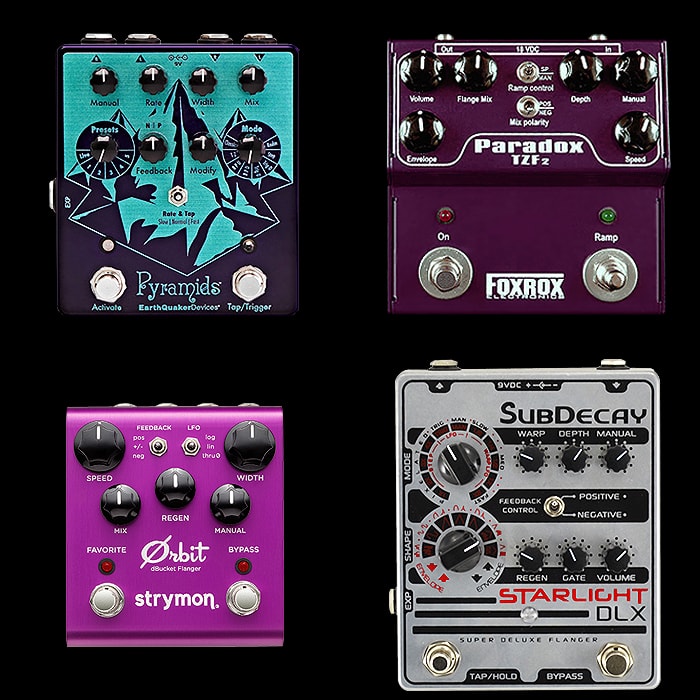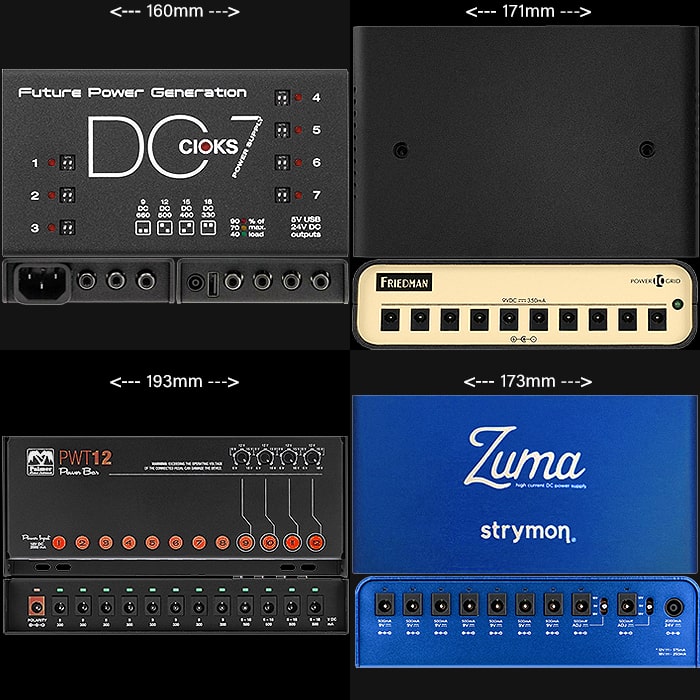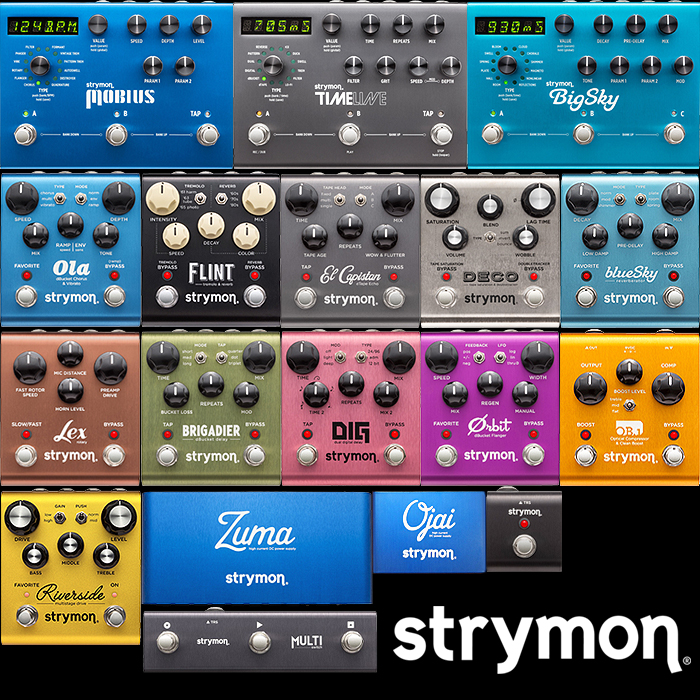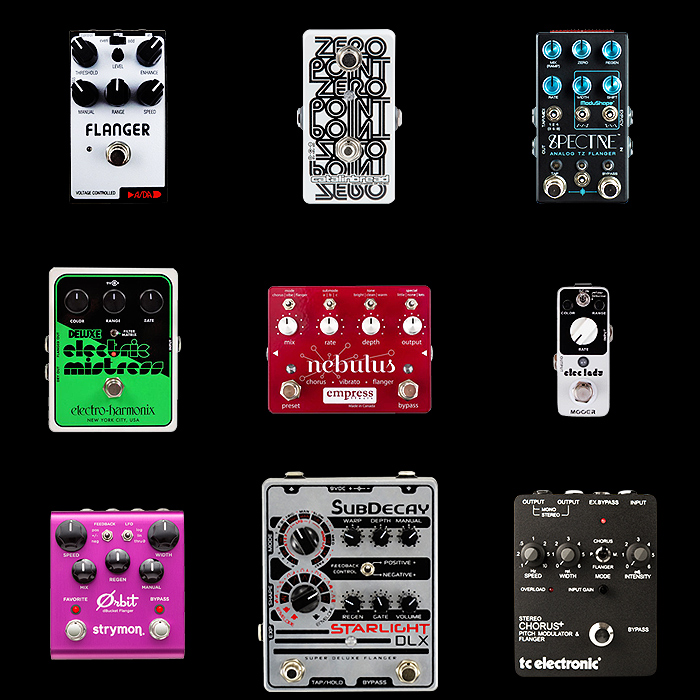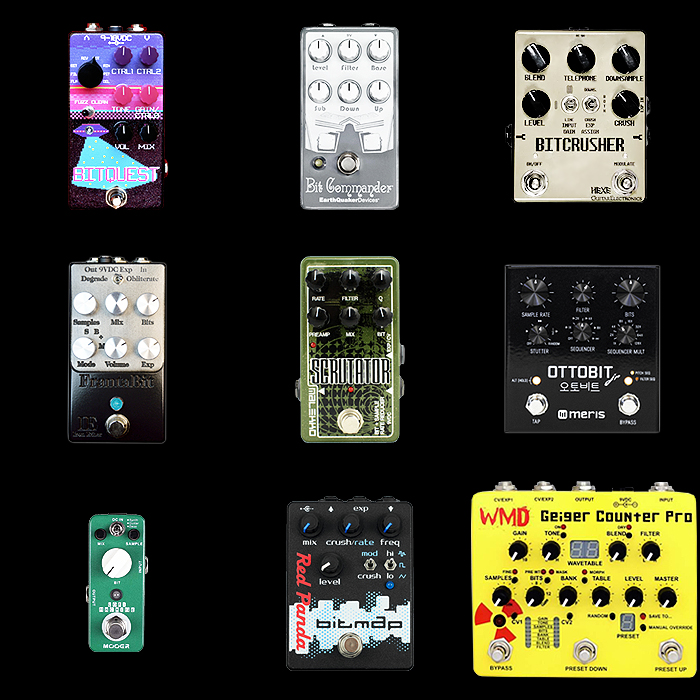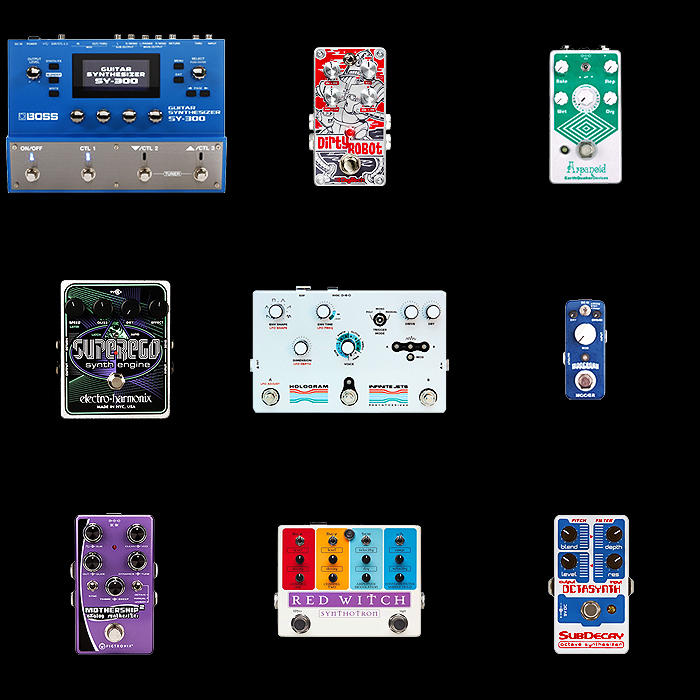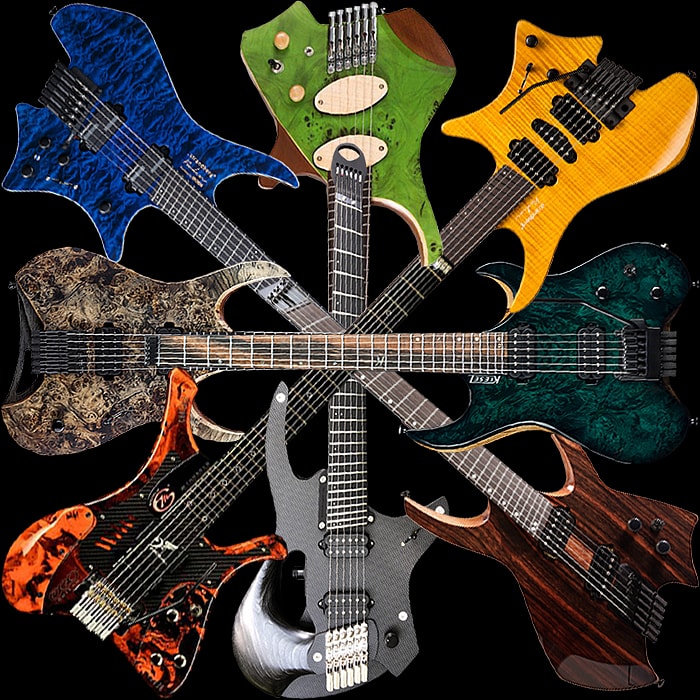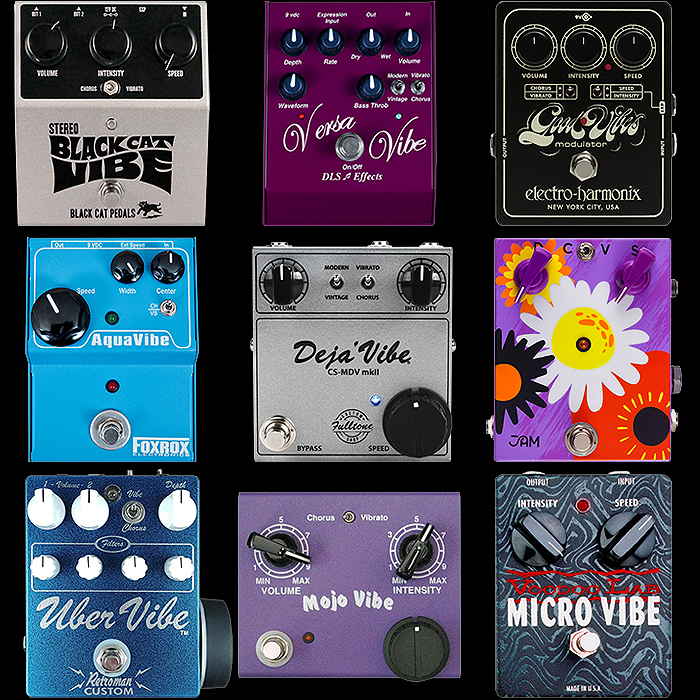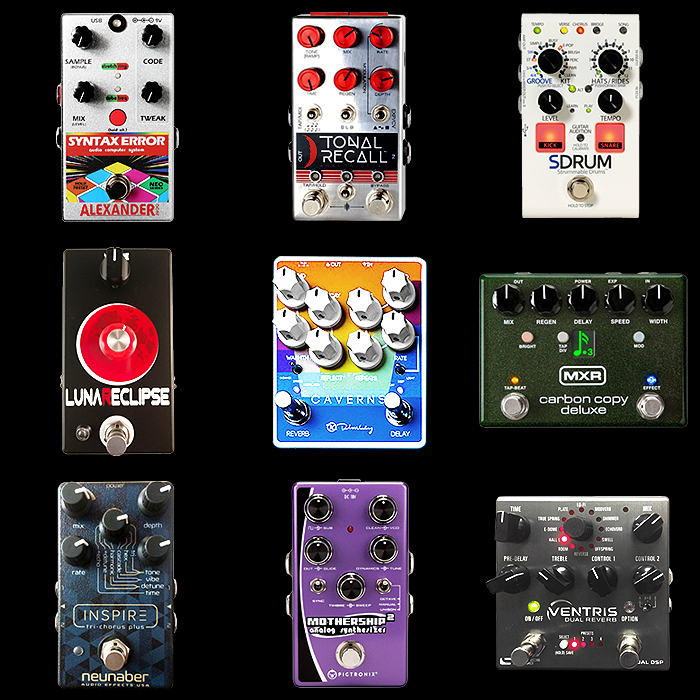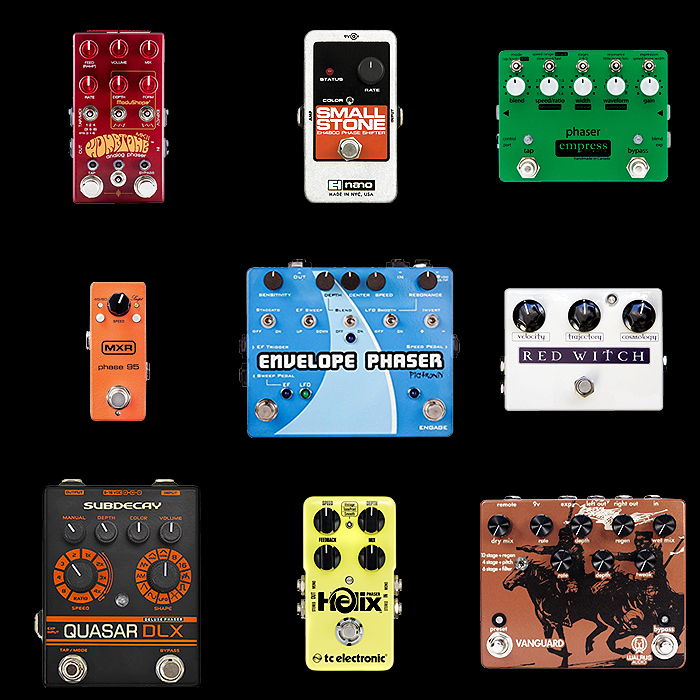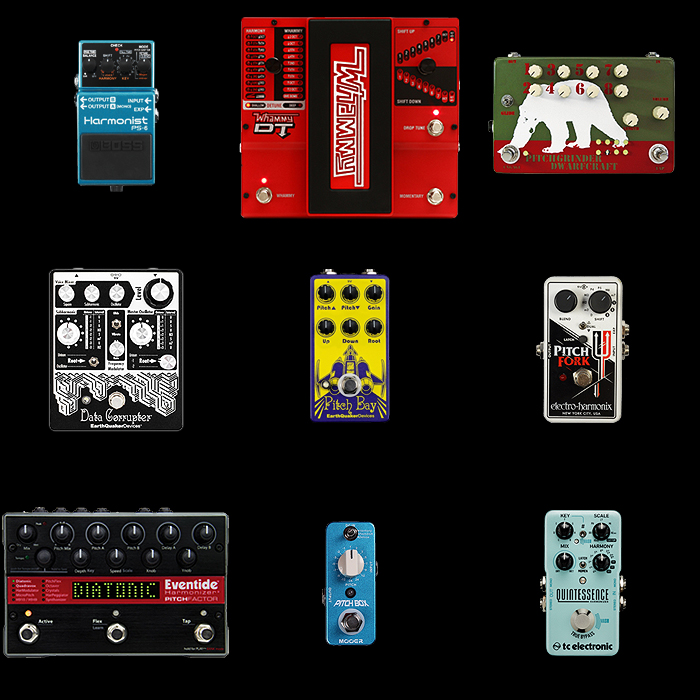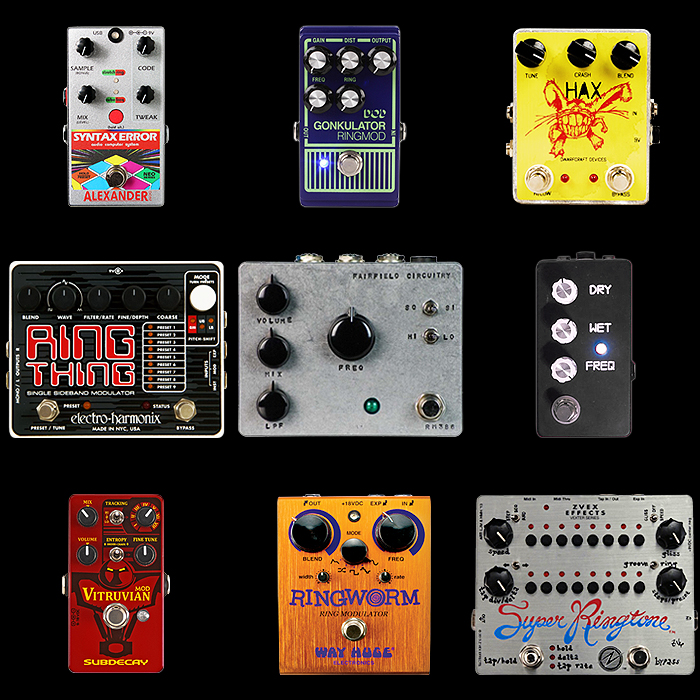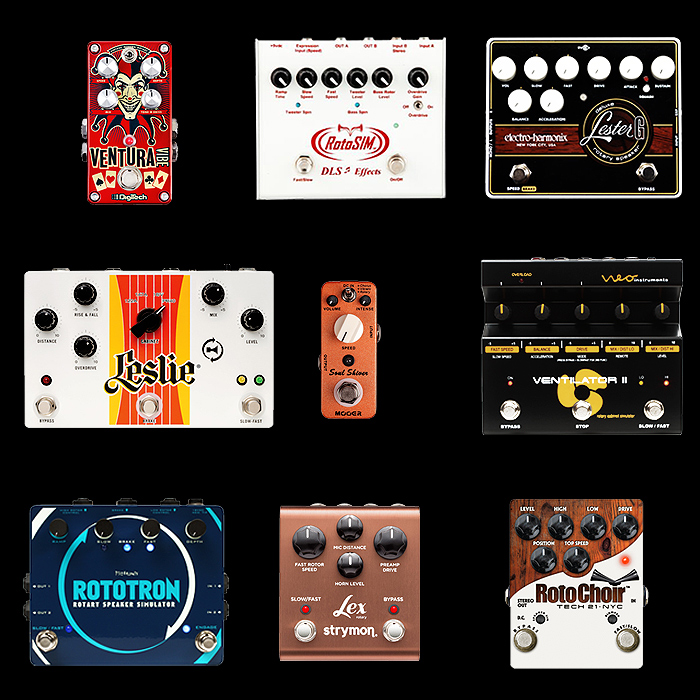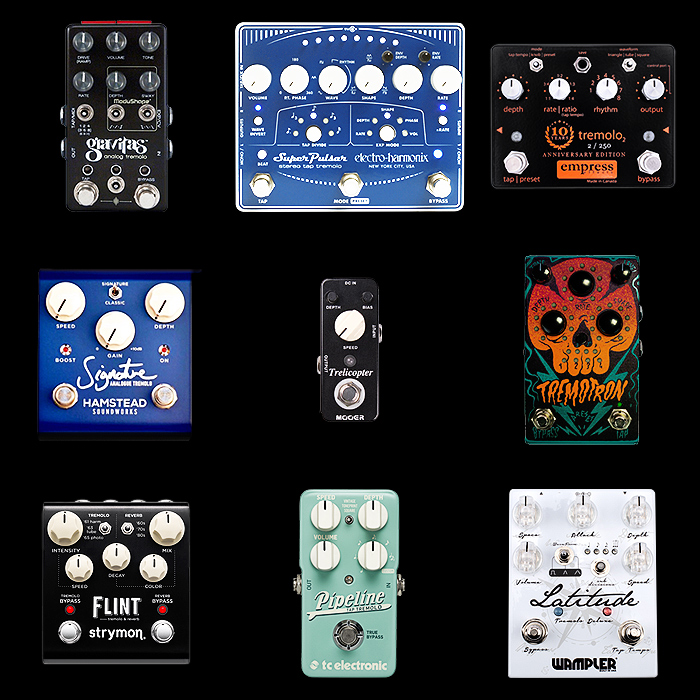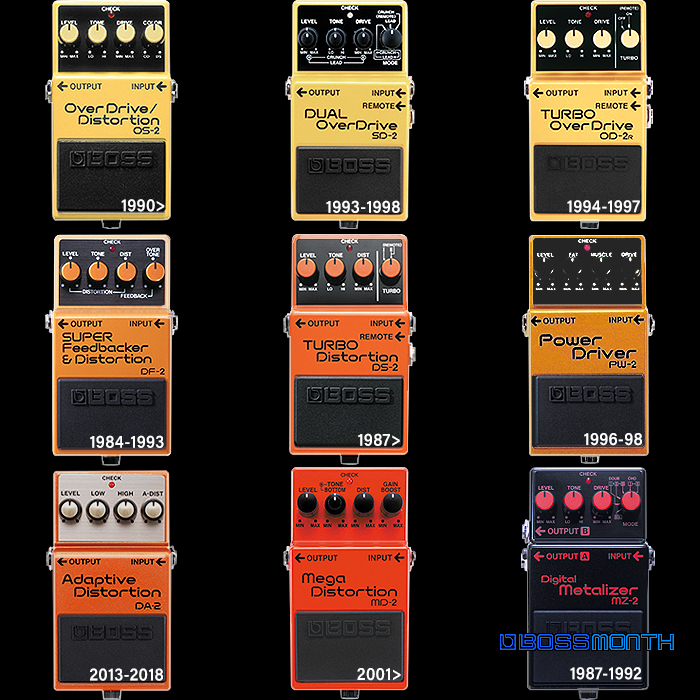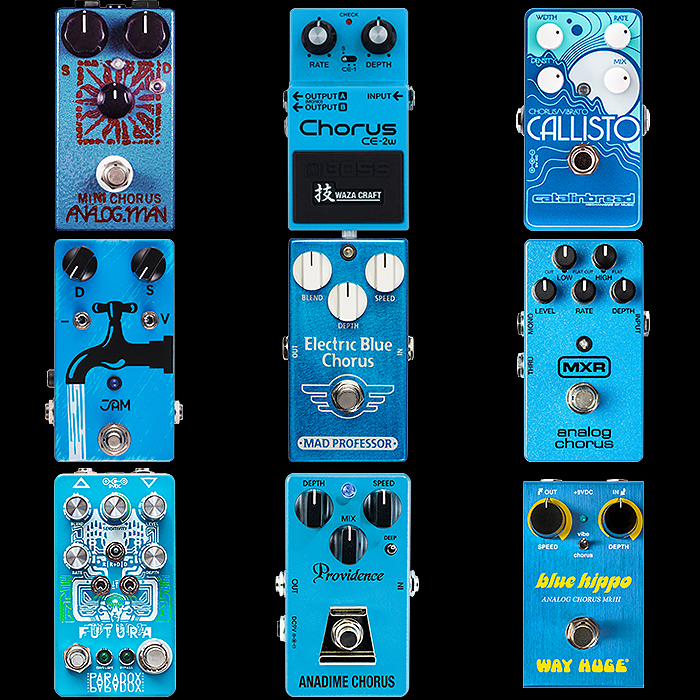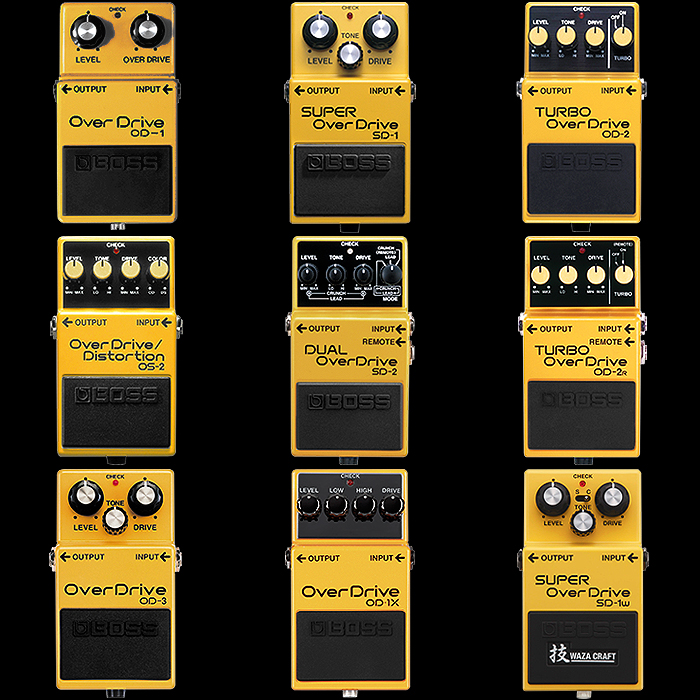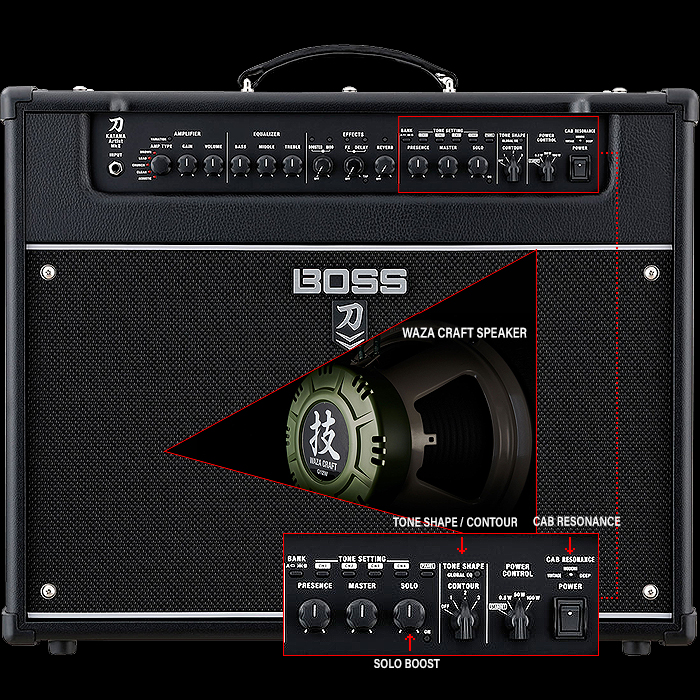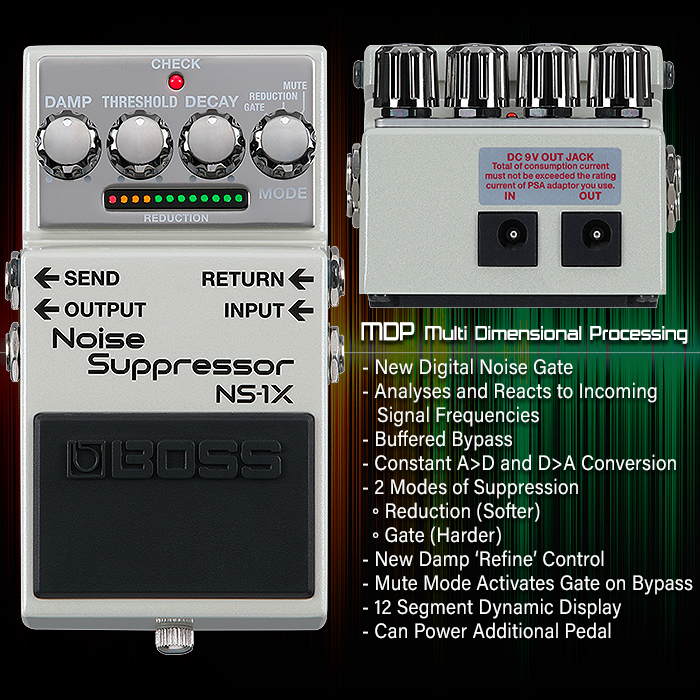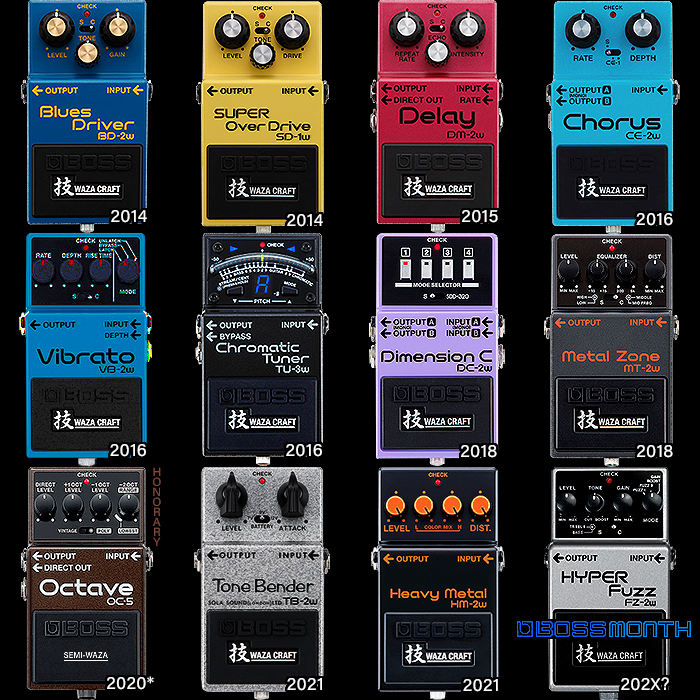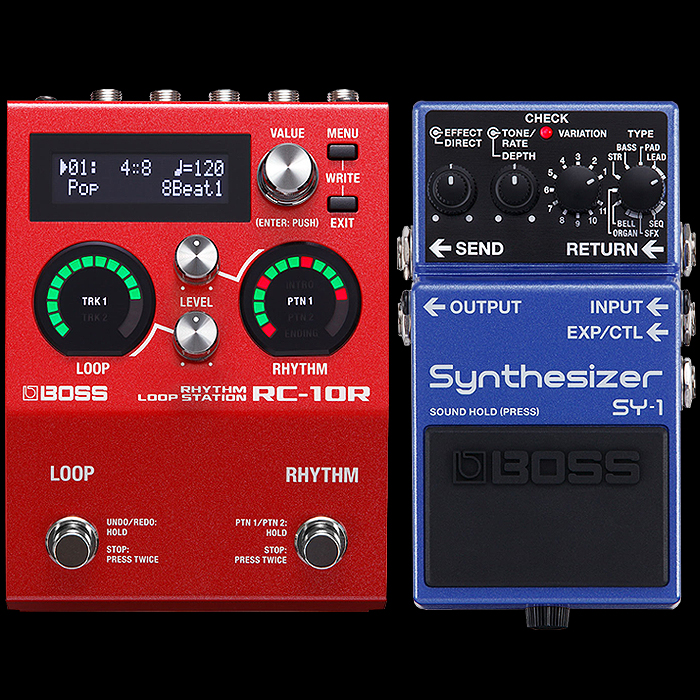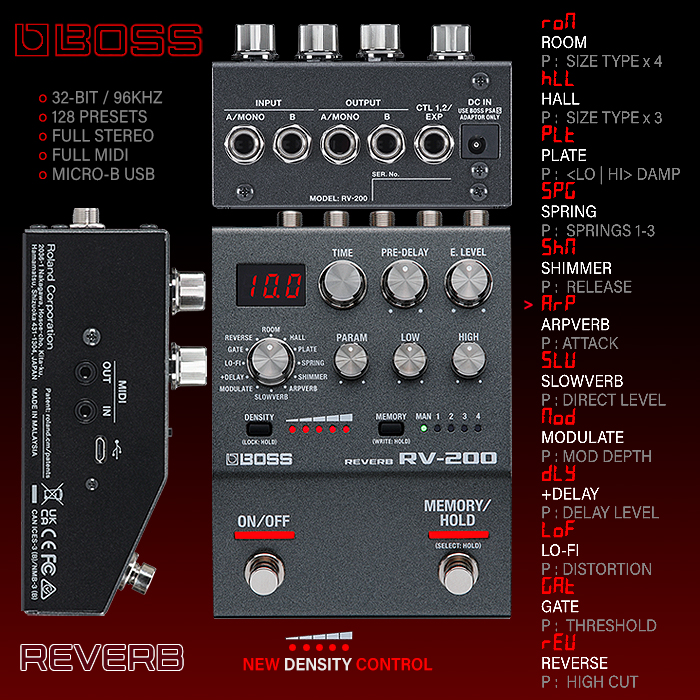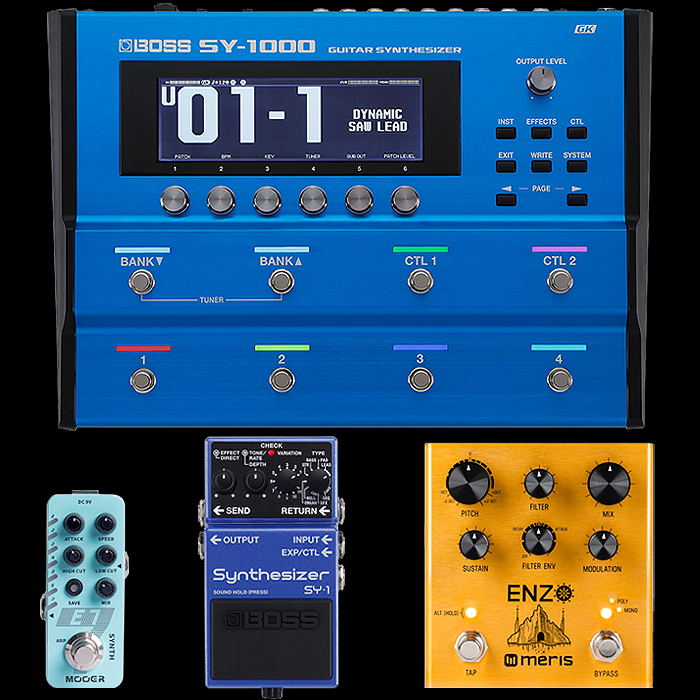Boss MD-500 vs Strymon Mobius - including full list of MD-500 Presets
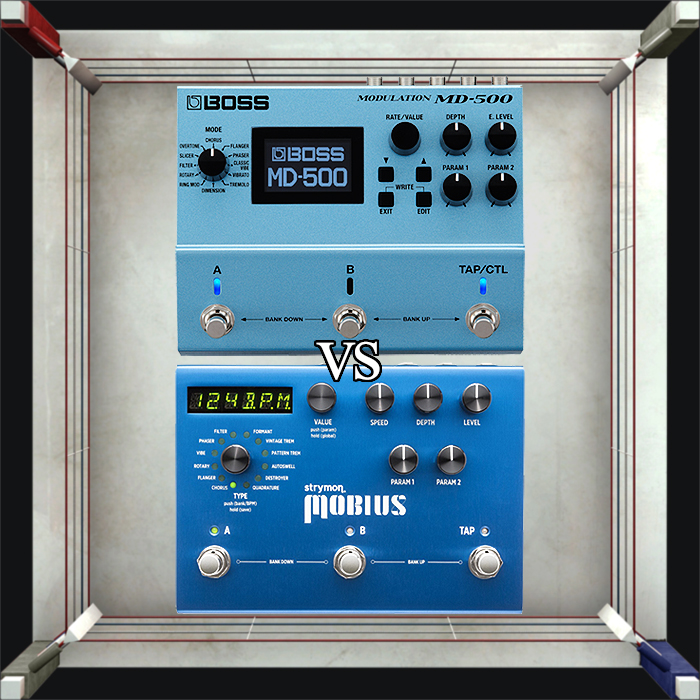
As some of you readers may know, I was an avowed Strymon fan for a very long time (still am actually) - sporting the celebrated Strymon combination of Mobius + TimeLine + BigSky at the end of my pedal chain. Then came the first upset - in the shape of the fairly recent Empress EchoSystem pedal, followed by the surprise introduction of the Boss MD-500 and RV-500 pedals.
As I’ve previously reported, I was a little ’meh’ about the Boss DD-500 and regardless of its merits, did not believe it was a better proposition than the TimeLine that was then in place, certainly nowhere near the level of my current EchoSystem. For Boss’s other two big pedals I immediately started hearing good things well in advance of their launch - the reviews were almost universally positive and favourable. And in fact as included below, it was really Rabea’s demos which swung the vote for me to check those pedals out, and I’ve never looked back.
Rabea's MD-500 Demo / Review
I've usually looked to Mike Hermans, Andy Martin, Brett Kingman, Pete Thorn, Nick Jaffe, Dennis Kayzer, Henning Pauly, Dan and Mick of 'That Pedal Show', and 'Knobs' - to supply my pedal reviews and demos. But Rabea Massaad of Dorje, Toska, Chapman and Andertons fame has been increasingly improving his review game. When the two big Boss boxes suddenly hit, I checked out a slew of video reviews, and the ones that really swung it for me were the Rabea ones.
The MD-500 comes across really well in the above video - it sounds great, and the control / menu elements, alongside the dual-routing options really set it apart from the Strymon Mobius, although it is quite evident that the MD-500 is very much a 'tribute' to the former.
I say 'tribute' in terms of basic form factor, footswitch layout etc. - notably the Boss is a good couple of technology iterations newer than the Strymon, so it's understandable it's got better electronics and improved functionality.
This video was the single strongest factor that encouraged me to buy this pedal. And after a couple or so months of use, I still find this video to be an excellent representation of what this pedal is capable of.
The Strymon 'Sweet Spot'
One of the key aspects of Strymon pedals which always endures them to their fans - are the lush sounding default presets. Strymon really 'tune' the tone of their presets with clever use of High and Low Pass filters, they also seem to fine-tune the middle frequencies in their own unique way - which automagically gives the Strymons a very unique and attractive / appealing sound right from the start.
The Boss pedals have a flatter more netural EQ - meaning their presets can have slightly sharper highs and sometimes more fluttery lows.
This means that, depending on what kind of sound you like, you may spend longer 'tuning' your Boss presets to get them to the same level as the Strymon. That said many people prefer the flatter, more neutral / natural EQ. Even while Strymon has legions of fans for its slightly warmer / affected EQ. For me personally - what I like about the Strymons is that they are slightly more input-friendly - meaning that because of their adjusted EQ they are a lot less likely to sound harsh or distorted when you throw in something fierce and high gain - you spend less time fine-tuning the Strymons in that way - at least that's how I experience it.
For my own personal preferences I really like both approaches, and as long as you know what the baseline is that you're dealing with - you can adjust appropriately.
Functional Head-to Head
The Boss MD-500 is obviously to a significant degree 'based' on the Strymon Mobius and both of them have 12 key effects modes. Overall they are really very similar, both contain all the obvious modulations - with the Boss leaning slightly more towards Choruses, while the Mobius takes a rather more quirky route for its unique modes.
To all intents and purposes you can say that 9 modes kind of match up near enough, and each pedal has 3 further distinct modes separate from the other. I never particularly liked the Choruses on the Mobius, did not think it was a modulation I was particularly keen on, but the Boss Choruses are really quite special - in particular the 'Dimension' mode - and I like those a lot.
For the Mobius, I used mostly the Flanger, Phaser and Tremolo modes - while with the Boss, I find myself using pretty much using all the modes across the board. I also find Boss's 3 unique modes more usable than the Mobius ones. So this does depend significantly on personal preferences:
MD-500 vs Mobius
Matching = 9
- Chorus = Chorus
- Flanger = Flanger
- Phaser = Phaser
- Classic Vibe = Vibe
- Tremolo = Vintage Trem
- Ring Mod = Quadrature
- Rotary = Rotary
- Filter = Filter
- Slicer = Pattern Trem (near enough)
Unique to MD-500
- Vibrato - Classic Mono LFO Oscillation
- Dimension - Dynamic Stereo Chorus based on Roland SDD-320 Dimension D
- Overtone - Octaver : 1 Octave Up + 1 Octave down
Unique to Mobius
- Formant - Vowel sound envelope filtering
- Autoswell - Volume Swells
- Destroyer - Bitcrusher
5 Areas where the MD-500 wins it
Because of Boss's newer technology, much like a newer generation of mobile phones, it obviously should have numerous advantages over its predecessors, and it really does here. Not all of them are necessarily visible or audible. Boss's superior internals - 32-bit AD/DA, 32-bit floating point processing, and 96 kHz sampling rate obviously put it above the the Strymon Mobius in terms of base-level processing power, meaning you should get a more pristine signal / output from the Boss. Despite that, the Strymon Mobius is cleverly tuned within its tone stack, meaning that you often cannot hear any obvious or distinct differences in fidelity.
I have therefore focused on the clearer and more tangible advantages that the Boss has:
- A/B Simul Mode - activate 2 effects simultaneously in series or parallel, e.g. a Chorus on the Left Channel, and a Phaser on the Right
- Better Display - The Boss has a much better and more detailed screen - much easier to see what's supposed to be happening
- Easier Menu System - more options, but easier to drill down, edit and save than on Mobius
- More Granularity - all manner of fine-tuning settings are at your disposal, sometimes a little bit option paralysis though
- More configurability of footswitches - can configure how foowswitches work in a variety of ways
Those are all clear advantages the MD-500 has over the Strymon.
In terms of disadvantages - the Boss enclosure is very slightly larger than the Strymon, and does not have quite the same pristine quality feel - particularly in the area of its plastic dials and switches (versus the milled aluminium of the Strymon). The Boss Enclosure feels robust, but the dials and in particular the edit switches are made of cheap and brittle plastic. I don't mind that they're plastic so much, but in the same way that German cars have the best dashboard, panel and switch plastics compared to most of their competitors, Boss could have similarly used better plastics here. It kind of lowers the overall tone just a smidgen. All the dials and switches though perform well and are crisp and accurate - which indicates very solid and high-quality internals, pots etc.
I have no hesitation in recommending this as the best multi-effect Modulation Workstation currently available, even though, and as always there is room for improvement.
It is important to say here that generally Strymon provides far superior reference materials, video tutorial and guides than Boss does. I requested a list of MD-500 presets from Boss - which they were unable to furnish - so I had to make my own (below). I find Strymon and Empress in particular do excellent guides and reference videos - which are sorely lacking from Boss!
Complete List of MD-500 Presets
Note that the Strymon pedals contain 100 pre-configured factory presets with a total possible user-configurable ones at 200. The Boss has 60 factory presets with a maximum range of 200 also. There are pros and cons in the number of preset options, I find overall the fewer Boss ones more usable than the Mobius ones as previously reported - with the Boss, I find myself pretty much using all the different effect modes available rather than just mostly 3 or 4 main ones - which was the case with the Mobius. Of course there will be some that prefer the overall effects modes on the Strymon, while I am now very firmly in the Boss camp in this area.
Boss MD-500 Presets by Patch Number
'St' in patch indicates Stereo mode option applied
01A - Prime Chorus [Chorus]
01B - CE-1 Chorus [Chorus]
02A - Prime Chorus St [Chorus]
02B - Triple Chorus St [Chorus]
03A - Darkside [Flanger]
03B - Boosted St [Flanger]
04A - Vintage Taste [Phaser]
04B - 80 2 Stage [Phaser]
05A - Fizzy Vibe [Classic-Vibe]
05B - Vintage Vibrato [Vibrato]
06A - Scanner Vibrato [Vibrato]
06B - Tremolo Twin [Tremolo]
07A - Dimension 421 St [Dimension]
07B - Dimension 5 St [Dimension]
08A - Rotary SP [Rotary]
08B - Dirty Spin [Rotary]
09A - Pedal Assist [Filter]
09B - Picking Wah [Filter]
10A - Modulated Ring [Ring Mod]
10B - Rich Detune [Overtone]
11A - Organ Tone St [Overtone]
11B - No Latency [Overtone]
12A - CE-1 Vibrato [Chorus]
12B - Inspired By [Chorus]
13A - Dirty Flange [Flanger]
13B - Step Flanger St [Flanger]
14A - 24 Hours St [Phaser]
14B - Resonance [Phaser]
15A - Bass Line [Slicer]
15B - Buzz Bass [Ring Mod]
16A - Ripple [Vibrato]
16B - Delayed Vibrato [Vibrato]
17A - 2Stage Phase St [Phaser]
17B - Light Phase [Phaser]
18A - Patterned Filter [Filter]
18B - Seq. Pattern [Slicer]
19A - Ideal for EP [Tremolo]
19B - Switching [Tremolo]
20A - Dimension 2+4 St [Dimension]
20B - Spacey Flange St [Flanger]
21A - Super Rich Chorus [Chorus]
21B - Fat Flanger [Flanger]
22A - Musical Saw [Filter]
22B - Submarine [Filter]
23A - Vibrated Chorus [Vibrato]
23B - Turn Around [Classic-Vibe]
24A - Cut! Cut! Cut! [Slicer]
24B - Skip St [Phaser]
25A - Smooth Transition [Filter]
25B - Reverse Playback [Filter]
26A - Phaser Like [Rotary]
26B - Close to Horn [Rotary]
27A - 70s Phaser [Phaser]
27B - Crescent Moon [Phaser]
28A - Intelli Ring [Ring Mod]
28B - Bit Crusher [Ring Mod]
29A - Light Detune [Overtone]
29B - Multi String [Overtone]
30A - Deluxe Tremolo [Tremolo]
30B - Panning St [Tremolo]
Boss MD-500 Presets by Effect Mode
Note that as before 'St' in patch name indicated stereo mode is active
All modes are Stereo-capable except where indicated by (Mono)
Chorus [Prime | CE-1 Chorus | CE-1 Vibrato | Tri-Chorus]
Depth = Depth | E.Level = Effect Level
Param 1 = Low Level | Param 2 = High Level
01A - Prime Chorus [Chorus]
01B - CE-1 Chorus [Chorus] (CE-1 C)
02A - Prime Chorus St [Chorus]
02B - Triple Chorus St [Chorus] (Tri-Chorus)
12A - CE-1 Vibrato [Chorus] (CE-1 V)
12B - Inspired By [Chorus] (Prime)
21A - Super Rich Chorus [Chorus] (Prime)
Flanger [Prime G / B] (= Guitar or Bass)
Depth = Depth | E.Level = Effect Level
Param 1 = Resonance | Param 2 = Manual
03A - Darkside [Flanger]
03B - Boosted St [Flanger]
13A - Dirty Flange [Flanger])
13B - Step Flanger St [Flanger]
20B - Spacey Flange St [Flanger]
21B - Fat Flanger [Flanger]
Phaser [Prime G / B : 2/4/8/16/24 Steps | Script (MXR Phase 90)]
Depth = Depth | E.Level = Effect Level
Param 1 = Resonance | Param 2 = Manual
04A - Vintage Taste [Phaser] (4-Stage)
04B - 80 2 Stage [Phaser] (2-Stage)
14A - 24 Hours St [Phaser] (24-Stage)
14B - Resonance [Phaser] (16-Stage)
17A - 2Stage Phase St [Phaser] (2-Stage)
17B - Light Phase [Phaser] (8-Stage)
24B - Skip St [Phaser] (4-Stage)
27A - 70s Phaser [Phaser] (Script, 4-Stage, Mono)
27B - Crescent Moon [Phaser] (16 Stage)
Classic-Vibe [Chorus | Vibrato] (Mono)
Depth = Depth | E.Level = Effect Level
Param 1 = Type - Chorus/Vibrato | Param 2 = Direct Level
05A - Fizzy Vibe [Classic-Vibe] (Vibrato)
23B - Turn Around [Classic-Vibe] (Chorus)
Vibrato [Prime | Scanner] (Mono)
Depth = Depth | E.Level = Effect Level
Param 1 = Color | Param 2 = Direct Level
05B - Vintage Vibrato [Vibrato]
06A - Scanner Vibrato [Vibrato] (Scanner)
16A - Ripple [Vibrato]
16B - Delayed Vibrato [Vibrato]
23A - Vibrated Chorus [Vibrato]
Tremolo [Prime T | Prime P(panning) | Twin(Fender) | Deluxe(Fender)] (All Mono except For Prime P / Panning)
Depth = Intensity/Depth | E.Level = Effect Level
Param 1 = [blank] / Waveform | Param 2 = Direct Level
06B - Tremolo Twin [Tremolo]
19A - Ideal for EP [Tremolo] (Prime T)
19B - Switching [Tremolo] (Prime T)
30A - Deluxe Tremolo [Tremolo]
30B - Panning St [Tremolo] (Prime P)
Dimension [Roland SDD-320 Dimension D Stereo Chorus : 1-5 | User : 1+2+3+4+5] ( All Stereo)
Depth = Stereo/Mono | E.Level = Effect Level
Param 1 = Output Level | Param 2 = Direct Level
07A - Dimension 421 St [Dimension] (4 / 1)
07B - Dimension 5 St [Dimension] (5 / 4)
20A - Dimension 2+4 St [Dimension] (2+4)
Ring Mod [Freq / Rate / Depth] (Mono)
Depth = Modulation Depth | E.Level = Effect Level
Param 1 = Modulation Rate | Param 2 = Direct Level
10A - Modulated Ring [Ring Mod]
15B - Buzz Bass [Ring Mod]
28A - Intelli Ring [Ring Mod]
28B - Bit Crusher [Ring Mod]
Rotary [Slow / Fast | Rise / Fall | Mic | Balance | Drive] (Stereo)
Depth = Drive | E.Level = Effect Level
Param 1 = Slow | Param 2 = Fast
08A - Rotary SP [Rotary]
08B - Dirty Spin [Rotary]
26A - Phaser Like [Rotary]
26B - Close to Horn [Rotary]
Filter [A-Wah G | A-Wah B | T-Wah G | T-Wah B | Pattern : 1-10, User, 8/12/16/24 Steps | Mode: LPF/HPF/BPF | Waverform] (Mono)
Depth = Depth | E.Level = Effect Level
Param 1 = Resonance | Param 2 = Frequency
09A - Pedal Assist [Filter] (A-Wah)
09B - Picking Wah [Filter] (T-Wah)
18A - Patterned Filter [Filter] (Pattern 5)
22A - Musical Saw [Filter] (T-Wah)
22B - Submarine [Filter] (A-Wah)
25A - Smooth Transition [Filter] (Pattern 1)
25B - Reverse Playback [Filter] (T-Wah)
Slicer [P 1-30 | H 1-20 | User | FX Type : Off/Pitch/Flanger/Phaser/Sweep/Filter/Ring Mod]
Depth = Pattern | E.Level = Effect Level
Param 1 = Attack | Param 2 = Duty (Duration)
15A - Bass Line [Slicer] (Pattern H9)
18B - Seq. Pattern [Slicer] (Pattern H11)
24A - Cut! Cut! Cut! [Slicer] (Pattern H11)
Overtone [Overtone | Detune (Mono)]
Depth = Direct Level | E.Level = Level 1
Param 1 = Pitch 2 | Param 2 = Level 2
10B - Rich Detune [Overtone] (Detune)
11A - Organ Tone St [Overtone]
11B - No Latency [Overtone]
29A - Light Detune [Overtone] (Detune)
29B - Multi String [Overtone]
Final Thoughts
In my opinion the Boss MD-500 is superior to the Strymon Mobius in most aspects - not necessarily right across the board, and there are still many arguments to recommend or prefer the Mobius even.
For me, I find the overall modes and presets on the MD-500 preferable and more usable. Both pedals sound amazing, and you may have your own personal preferences to go one way or the other. In terms of pure processing power and total functionality it's an easy win for the Boss, especially the Dual Routing Modes.
There are just a couple of things that irk me really - I don't like the cheap plastic dials and buttons, and I'm a little underwhelmed by the support materials, tutorials and references Boss provides for this pedal. I know it's still early days, but Strymon and Empress in particular do that whole side of their customer support a lot lot better.
If you want the best Modulation Workstation pedal currently available, that honour now has to go to Boss, with the Mobius a respectable runner-up. I have and will still maintain both, although it's clear that the MD-500 is more closely aligned with my needs.



















